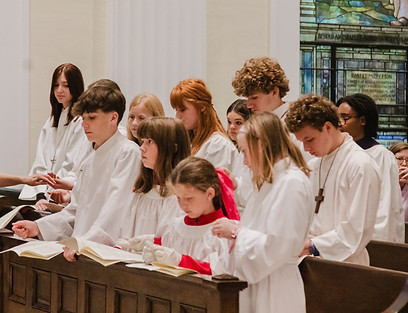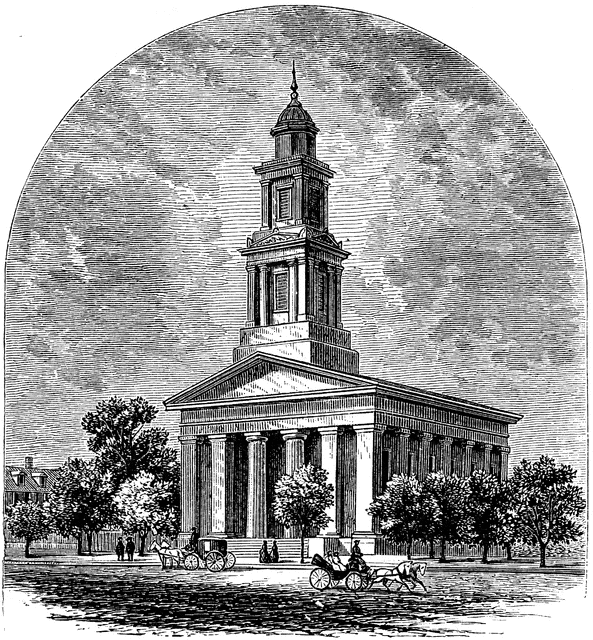Wilmer Hall

We are thrilled to announce that Wilmer Hall has been placed on the National Register of Historic Places by the U.S. Department of the Interior!
Founded in 1864 by Bishop Richard Hooker Wilmer of the Episcopal Diocese of Alabama, Wilmer Hall—originally the Church Home for Orphans—was established to care for children and widows devastated by war, poverty, and disease. In 1916, we moved to our current location. John A. Wetzel, charter member of the Alabama Institute of Architects, designed the earliest buildings as Tudor Revival with American Craftsman elements on Old Shell Road; in 1948, the name was formalized as Wilmer Hall Children’s Home. Today, Wilmer Hall remains committed to nurturing at‑risk youth through a holistic mission: providing safe housing, academic enrichment, life‑skills training, emotional support, and spiritual development.
2025 Diocesan Acolyte Festival




Here's the link to all the pictures taken during the Acolyte Festival 2025
Join us in celebrating and honoring Bishop Russell's 10th anniversary!

This summer, we celebrate 10 years of faithful, joyful ministry from our bishop, the Rt. Rev. Russell Kendrick. Over the past decade, Bishop Russell has guided us with wisdom, humility, and a lot of heart. Always greeting us as “Friends and neighbors…” Bishop Russell has made every corner of this diocese feel like home—where we are seen, known, and loved.
In true Bishop Russell fashion, when asked how we should mark this milestone, he didn’t want a party. He asked us to serve one another in love.
So from now through July 25, we invite you to honor his 10 years by doing 10 acts of Random Kindness—big or small. Say thank you to a store clerk. Mow someone’s lawn. Write an encouraging note to someone who’s struggling. Volunteer at a food pantry. Make peace with a neighbor. However you choose to serve, do it with love.
Fill out the form below to share how you celebrated his ministry. Tag your acts on social media with #FriendsAndNeighbors10 as a tribute to the way he’s taught us to live—not just as people in a pew, but as friends and neighbors in Christ.
Let’s celebrate Bishop Russell’s ten years the way he’s lived them: by loving boldly, serving freely, and welcoming all!
OUR DIOCESE
The Episcopal Church of the Central Gulf Coast is 62 worshiping communities located in southern Alabama and northwest Florida. We are small churches and large churches; we are contemporary and traditional.
We are 18,000 followers of Jesus.
When you come to an Episcopal church no matter how crazy the world has been, no matter how terrible your week has turned out, no matter what kind of mess you have made of it, you will hear a message of God's unending grace, and you will be invited to be fed with the bread of God's life. It's a great kind of Christian to be.
We are unabashedly inclusive; we welcome diversity and differences of opinions;
we hold to worship that stretches back to the first day of the apostles; we make decisions centered on the Bible, but that are also enriched by what we have learned in history, and the gift of our own reasoning. We don't shy away from issues that involve justice and peace; we are committed to furthering God's dream of a new creation of peace and unity.
Most of all, we are children of God, just like you.
Welcome.
Bishop Russell
The Right Reverend J. Russell Kendrick is Bishop of the Episcopal Diocese of the Central Gulf Coast
Bishop Russell was elected to be the fourth bishop of the Central Gulf Coast in February of 2015, and was ordained as bishop on July 25, 2015.
A native of Fort Walton Beach, Florida, Bishop Russell earned a Bachelor of Arts in architecture and marketing from Auburn University in 1984. Then in 1995, he received a Master of Divinity from Virginia Theological Seminary. At the time of his election, Bishop Russell was rector of St. Stephen's in Birmingham, Alabama since 2007. Russell is married to Robin, and they have two children, Aaron and Hannah.
DIOCESAN HISTORY
When Bishop George M. Murray addressed the 1968 convention of the Diocese of Alabama, he described his vision of a new diocese which might be formed from counties in south Alabama and northwest Florida. He made his address immediately following Bishop C. C. J. Carpenter's announcement of his plan to resign at year's end after a thirty-year episcopacy. After his 15 years of assisting Bishop Carpenter in serving the more than 100 congregations in Alabama, Bishop Murray spoke of new possibilities. One of them was a new diocese.
His vision was as exciting as it was historic. Since 1830, the Diocese of Alabama had covered the state. The Diocese of Florida, formed eight years later, also covered the state (including congregations in Cuba for a few years) until 1888 when a new jurisdiction of South Florida was created. From time to time, dividing the Diocese of Alabama had been considered, but never decisively.
Throughout 1968 and 1969, Bishop Murray and Bishop Hamilton West of Florida worked with clergy and lay leaders in both areas. In early 1970, the conventions of both dioceses agreed to the new diocese. General Convention approved in the summer of the same year. Bishop West, senior of the two bishops, chose to remain where he was. Bishop Murray then chose to lead the new diocese.
The Primary Convention of the new diocese met December 3-5, 1970, in Christ Church, Pensacola. Bishop West preached from Exodus 14:15: "The Lord said to Moses, 'Tell the people of Israel to go forward.' "At his invitation, Bishop Murray presided over the sessions that organized the diocese. Before adopting canons, the convention adopted a motion "that the new diocese should be structured so as to allow freedom to explore new ideas and to not be hampered by traditional concepts of either of the existing dioceses." With this as the standard, canons were adopted for a relatively simple structure open to possibilities for creative mission and ministry. The convention named this new beginning the Diocese of the Central Gulf Coast.

